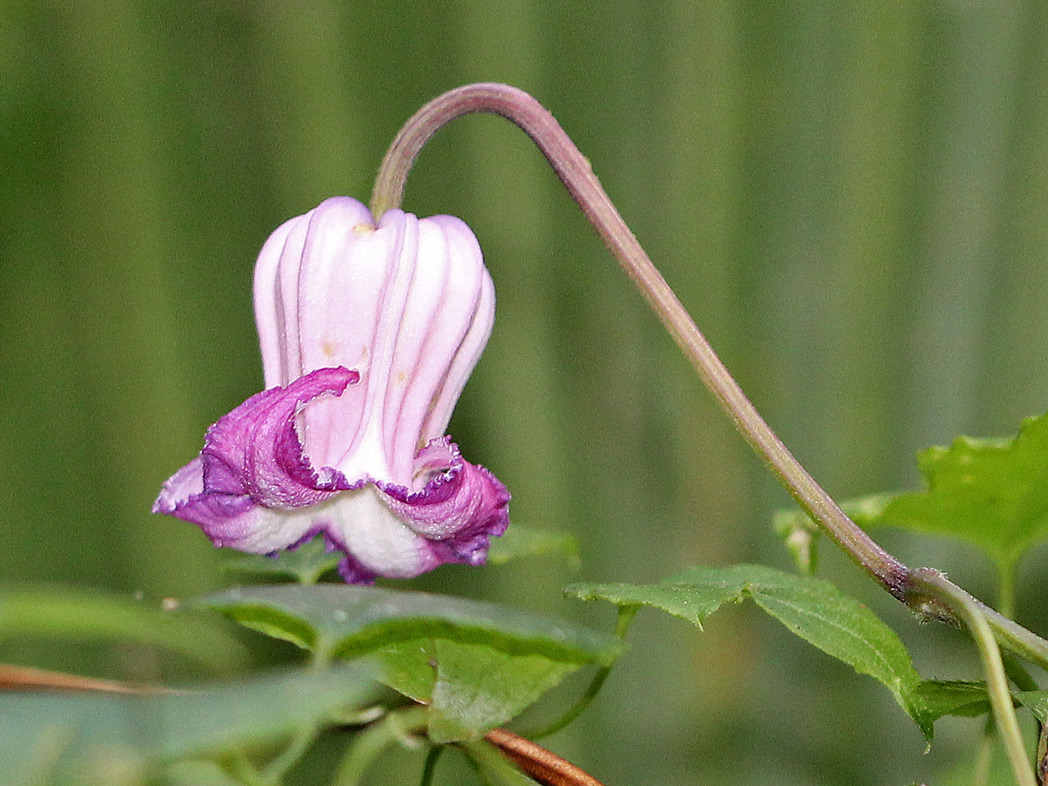Swamp leather-flower
Pictured above: Swamp leather-flower (Clematis crispa) by Mary Keim. Click on terms for botanical definitions. View post as a PDF.
Swamp leather-flower is a climbing or trailing perennial vine. Its distinct nodding flowers are pinkish-purple and mildly fragrant. No petals are present, but the four petal-like sepals are fused at the base, giving the bloom a bell- or urn-like shape. The sepals separate and become revolute as the flower opens. Sepal margins are thin and undulate. Flowers are solitary and born on naked, angled stems. Leaves are pinnately compound, oppositely arranged, and usually have 3 to 5 leaflets. Fruits are achenes with long conspicuous awns.
Swamp leather-flower occurs naturally in floodplain forests, wet hammocks and riverine swamps. Flowers typically bloom in spring and summer, attracting a variety of pollinators. The seeds provide food for many birds and small wildlife.
The genus name Clematis is from the Greek clématis, or “climbing plant.” The common name leather-flower refers to the flower’s fleshy sepals. Clematis crispa is also known by the common names Curly Clematis, Curlflower, Curly virgin’s bower, (all referring to the curled-back sepals), and Marsh Clematis.
Family: Ranunculaceae (Buttercup or crowfoot family)
Native range: Panhandle; nearly throughout North and Central Florida
To see where natural populations of swamp leather-flower have been vouchered, visit florida.plantatlas.usf.edu.
Hardiness: Zones 8A–9B
Soil: Moist to moderately dry sandy, loamy or mucky soils
Exposure: Partial sun/shade
Growth habit: 6+ feet long
Propagation: Seeds, division, cuttings
Garden tips: Swamp leather-flower does well on a fence or trellis. Old growth and stems should be cut back periodically.
Swamp leather-flower plants are occasionally available from nurseries that specialize in Florida native plants. Visit www.plantrealflorida.org to find a nursery in your area.
For more information on other Clematis species, see:
Pine-hyacinth (Clematis baldwinii)

